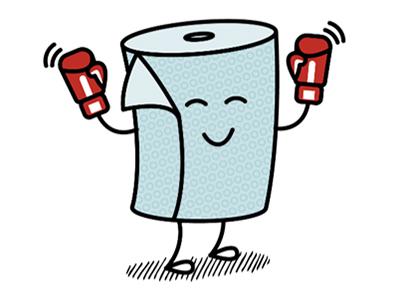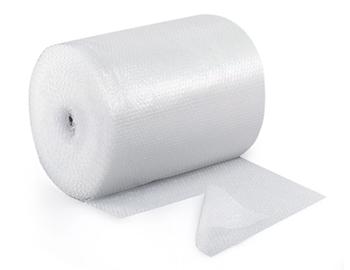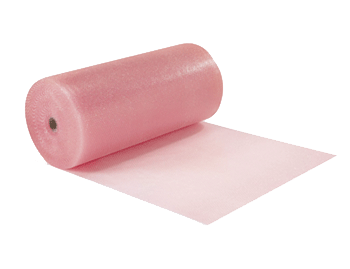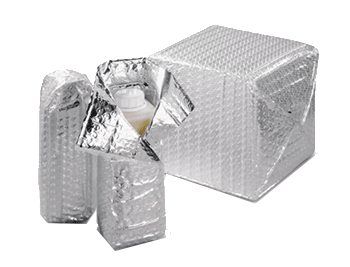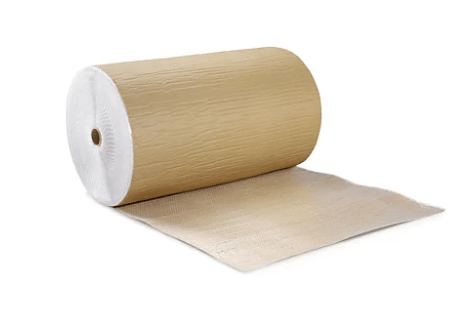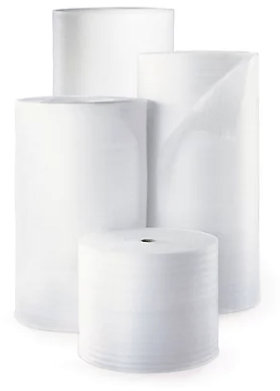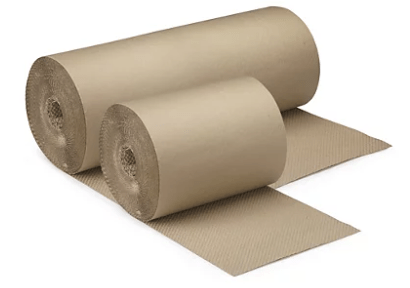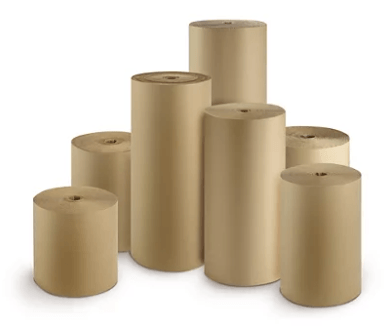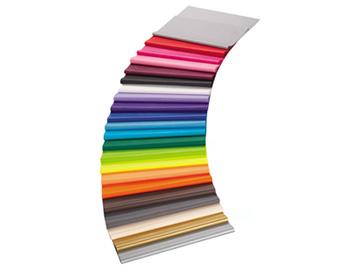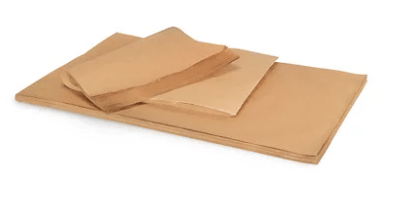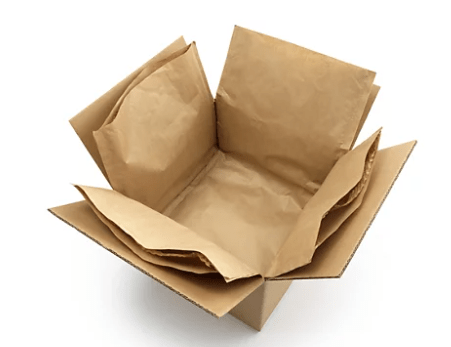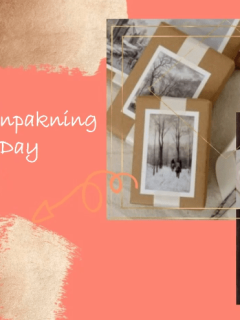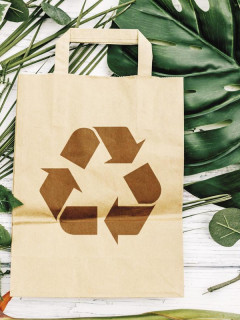Bubble wrap, also known as bubble wrap, is a packaging material that is particularly popular among professionals. The many air bubbles provide optimal protection for even the most fragile products. It thus provides the best buffer against shocks. What can you protect with this material? What is the best way to pack with bubble wrap? And what types of bubble wrap are available on the market? RAJA’s packaging specialists provide answers to all your questions here.
1. What is bubble wrap used for?
Bubble wrap is very popular for wrapping products and is one of the most effective ways to protect products during transport. Knowing that packages can be shaken vigorously several times during transport, good protection is a necessity. Fragile products become much less sensitive to shocks and vibrations if they are wrapped in bubble wrap, and online retailers use it, for example, when wrapping products such as glass, porcelain, perfume bottles, wooden items or books.
Bubble wrap is also a good material to use when moving house. The film has the advantage of being able to easily adapt to any shape. Thanks to its high flexibility, you can fold it in any direction and it can easily be used to wrap furniture, crockery, pictures and lamps.
2. How should I pack with bubble wrap?
Should you point the bubbles in the film inwards or outwards to protect your products? Contrary to popular belief, there is actually a rule for this. The plain side of the bubble wrap should always be on the outside. The bubbles should then come into contact with your product. This way, the small air bubbles in the film do their job best and give your products maximum protection. This minimises the risk of damage or breakage.
3. What types of bubble wrap are there?
Are you one of those people who immediately think of plastic rolls when you think of bubble wrap? That’s not surprising, because the history of bubble wrap started with this. You can read more about that history later in this article. In the meantime, many different varieties of bubble wrap have been developed, each with their own specialised applications. Below we have listed the most common types of plastic bubble wrap.
|
Standard bubble wrap
|
This transparent standard bubble wrap is the most common variant. It comes in rolls, with or without pre-cut sheets, or in the form of bags. It is available with both small and large bubbles, and RAJA’s bubble wrap is made from 30-50% recycled material. You can use it to wrap your fragile products or as padding. |
|
Anti-static bubble wrap
|
Antistatic bubble wrap is used to protect electronic products. This film has undergone anti-static treatment for this purpose. This means that it is designed to prevent the build-up of static electricity while providing optimal protection against shocks. It is ideal for packaging computers, cameras and electronic components. |
|
Bubble wrap with insulation
|
The metallised side of this isothermal film keeps your products at the right temperature for longer, while the bubble side protects them from shocks. Thanks to its insulating function, this model is ideal for transporting products that are sensitive to thermal shocks, such as pre-packed chocolate. |
|
Paper laminated bubble wrap
|
Paper-laminated bubble wrap gives you “all-in-one” packaging: Protective bubble wrap with kraft paper on the outside simplifies packaging. The paper-coated bubble wrap cushions shocks and provides extra protection for impact-sensitive products during transport. |
|
Foam film
|
Foam film provides soft protection and is perfect for protecting furniture, glass, car parts and painted or lacquered surfaces, among other things. Well suited as a shim. Flexible and elastic, moulds perfectly to the products. |
4. What paper alternatives are there to bubble wrap?
Over the years, a number of alternatives to traditional bubble wrap have been developed. First came the development of variants made from recycled plastic. This is an ideal way to give used plastic a second life. More recently, alternatives have been developed from a renewable raw material, namely paper. This is an important innovation and part of the mono-material trend. Let’s take a closer look at these paper alternatives below.
|
Paper bubble wrap
|
This bubble wrap is made from kraft paper. It is highly resistant to impact due to its embossed structure and the air between the 2 layers of paper. This mimics the same effect as traditional bubble wrap. Paper bubble wrap is flexible, opaque, anti-static and easily recyclable. Watch RAJA’s demo video later in this article. |
|
Corrugated cardboard
|
Corrugatedcardboard is an environmentally friendly alternative! It is made from 100% recycled paper and can be recycled after use. Our wide range of corrugated cardboard on rolls provides excellent protection for lighter products during transport. Corrugated cardboard is not only lightweight and flexible, it is also thin enough to be used to separate products without taking up valuable space. |
|
Tissue paper
|
Tissuepaper is an environmentally friendly material that is mainly used to wrap products with a scratch-sensitive surface. However, it is recommended not to wrap fragile goods extensively with tissue paper. It provides good protection against scratches, but not enough against major shocks. |
|
Kraft paper in sheets
|
Kraft paper is a strong material that can be used for wrapping, protection and as a filler. |
|
Insulating thermo lining
|
Insulating ther mo liner is thermal protection suitable for transporting chilled or frozen products at room temperature. The paper is easy to use, flexible and lightweight, and fits neatly into a bag or cardboard box. |
In this video, RAJA shows you how to use paper bubble wrap:
Protecting your products is essential to providing the best possible customer experience, so don’t forget this when packing!
Want to know more about bubble wrap? Read more about package filling and protection here. You can also contact RAJA’s customer centre on 22 51 40 00 or post@rajapack.no.

Did you know this about bubble wrap?
- Bubble wrap lowers your stress levels: research has shown that one minute of bubble popping is as relaxing as a 30-minute massage. One theory behind this is that it has to do with our ancestors’ habit of squeezing ticks or other insects that bothered us, with the typical popping sound. It could also be related to the fact that people are soothed by touch. Rubbing the bubbles and popping them simulates touch experiences.
- Bubble wrap was originally a type of wallpaper: In 1957, engineer Al Fielding and Swiss inventor Marc Chavannes wanted to market a wallpaper with a raised texture. As an experiment, they glued two shower curtains together. After the edges were sealed, air bubbles remained in the centre. As wallpaper, this idea never achieved much success, but the packaging industry soon discovered how it could be used.
- This January, you can celebrate Bubble Wrap Appreciation Day: the last Monday in January is the day when we celebrate bubble wrap. Thanks to this versatile protective material, lots of products arrive safely at their destinations every day, without breaking or bursting.
Source: 15 facts about packaging
